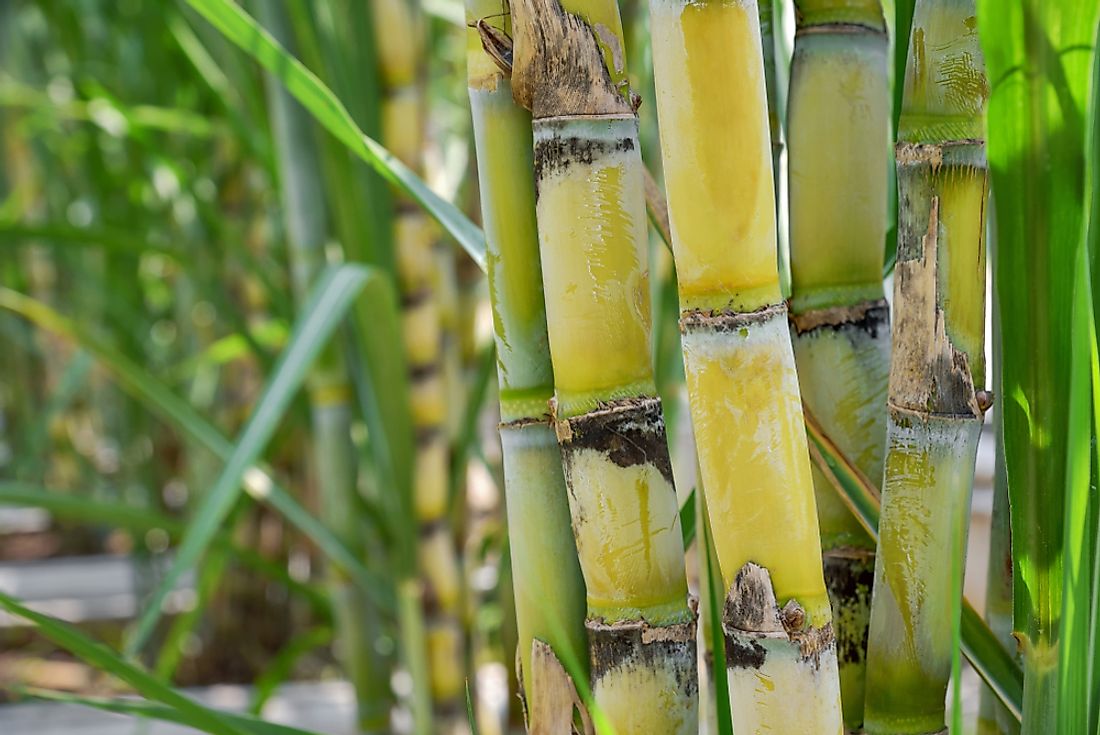What Are The Major Natural Resources Of Guyana?

Guyana is a South American nation in the continent’s northern edge where it spans an area of roughly 83,000 square miles. The Guyanese economy is one of the most rapidly developing with various financial organizations classifying it among the western hemisphere's most rapidly growing economies. The Guyanese gross domestic product in 2017 was roughly $3.68 billion which was the 155th highest in the world according to the World Bank. The Guyanese economy is heavily dependent on natural resources such as arable land, minerals, and forests. Proper utilization of these resources is one of the primary reasons for Guyana’s economic growth.
Forests
The Guyanese government estimated that in 2015, roughly 83.95% of the country’s total land area was covered with forests. Botanical research indicated that Guyanese forests were home to more than 1000 different varieties of trees. Since 2004, Guyana’s forest cover has declined significantly due to the exploitation of the country’s timber. During the 20th century, Guyana’s timber resources were greatly underutilized due to several challenges with the main one being the poorly developed transport infrastructure that limited access to the forests. The Guyanese government invested huge sums of money for the improvement of the accessibility of forests for commercial exploitation. Several foreign nations such as Malaysia and South Korea have invested in the Guyanese timber industry.
Arable Land
In 2014, approximately 2.13% of Guyana’s total land area was classified as arable. Since 2004, the amount of arable land in Guyana has been declining at a rapid rate. Despite the decline in the size of arable land in Guyana, the agricultural sector is one of Guyana’s most vital sectors. The Guyanese government estimated that in 2012 the agricultural sector contributed roughly 20.3% of the Guyanese gross domestic product. A large section of the Guyanese labor force was employed in agriculture. Most of Guyana’s agriculturally productive land is located on the country’s coastal plain. Due to the location of Guyana’s agricultural land, the Guyanese people have been forced to construct a system of dikes to keep the land safe from the high tides. The need for dikes in the agriculturally productive areas has limited the expansion of the country’s agricultural sector. Guyana’s most important crops include sugarcane, rice, wheat, and cocoa.
Sugarcane
Guyana’s most important crop is sugarcane with the Guyanese government estimating that the crop accounts for roughly 40% of the country’s total agricultural output. Data indicates that Guyana produces more sugar than other countries within the Caribbean region. Due to the importance of sugarcane to Guyana, the government established a company, the Guyana Sugar Corporation, to grow the country’s sugar industry. The corporation is the major producer of sugar in Guyana. Most of the sugar produced in Guyana is sold to other countries mainly within the European Union. The Guyana sugarcane industry faces a significant number of challenges such as mismanagement, crop diseases, and extreme weather diseases. The challenges significantly reduced Guyana’s sugar output, particularly during the 1980s. The government of Guyana urged the farmers to grow a disease-resistant variety of sugarcane to increase the country’s sugarcane production.
Rice
Another major crop in Guyana is rice which is primarily grown for the domestic market. Unlike sugarcane growing, rice growing in Guyana is mainly done by private farmers. However, the Guyanese government owned most of the mills as well as the irrigation facilities. According to data from the Guyanese government from the 1960s to the 1980s, the size of land dedicated to rice growing in Guyana declined significantly. In the 21st century, the Guyanese government encouraged rice farmers to increase the volume of rice they produce for the export market. Venezuela and Trinidad and Tobago are some of the major buyers of Guyanese rice. The major challenge facing the Guyanese rice industry is the mismanagement of the country’s irrigation system as well as the rice mills.
Peanuts
Guyanese farmers also grow a significant quantity of peanuts particularly in the Rupununi region. Due to the importance of peanuts to the Guyanese economy, the government urged the farmers to implement new agricultural techniques. As a result of the improvements implemented by the Guyanese government, the volume of peanuts produced per acre increased from 1100 pounds to more than 2500 pounds.
Fish
Due to Guyana’s proximity to the Atlantic Ocean, the country has vast quantities of fish resources. In the 20th century, the Guyanese government invested in the fishing industry after realizing the benefit it could bring to the country’s economy. In 1989, the Guyanese government estimated that the country’s fishermen caught roughly 36,000 tons of fish which was a reduction from fish caught in 1986 which exceeded 45,000 tons. Guyanese fishers caught large quantities of shrimp and to avoid paying taxes sold the shrimp while in international waters.
Minerals
Guyana has been blessed with vast deposits of minerals ranging from gold to bauxite that is vital to its economy. Gold is one of Guyana’s most important minerals and is mainly extracted from alluvial deposits. Besides, gold in Guyana is also extracted from open pits with the most important one being the Omai Gold Mine which produces roughly 300,000 ounces of gold each year. The Guyanese government has invested in mechanizing the country’s gold mining sector to increase the country’s gold production. Guyana also has significant deposits of diamonds which were initially discovered in the late 19th century. Guyana’s diamond mines achieved peak production during the early 20thcentury, and in the 1920s, more than 200,000 carats of diamonds were produced in the country. Another major mineral in Guyana is Bauxite which was initially produced in 1917. Bauxite is extremely important to the Guyanese people, and the government has partnered with international financiers to improve its bauxite mining capabilities.
The Growth Of Guyana’s Economy
The Guyanese economy has grown significantly due to the policies put in place by the government that emphasized economic growth. One of the strategies that the Guyanese government implemented was the removal of price controls which attracted foreign investment.







